Sagarmatha National Park covers an area of approx—1,148 square kilometers (443 square miles). The park was established in 1976 and is located in the Solukhumbu District of the Sagarmatha Zone in eastern Nepal. The park's coordinates are approximately 27.9327° N latitude and 86.8063° E longitude. The park's entrance is typically accessed via a flight to Lukla, followed by a trek through various villages and trails leading into the heart of the park.
The nearest major town is Namche Bazaar, which serves as an entry point for trekkers and climbers heading to Everest and other peaks in the region. It encompasses a significant portion of the Himalayas, including the southern half of Mount Everest (Sagarmatha in Nepali) and several other notable peaks such as Lhotse, Nuptse, Cho Oyu, Pumori, and Ama Dablam.
The park's area includes a diverse range of altitudes, from around 2,845 meters (9,334 feet) at the park's lowest point near Jorsalle to the summit of Mount Everest at 8,849 meters (29,032 feet). This vast altitudinal range contributes to the park's rich biodiversity and varied ecosystems, from temperate forests to alpine meadows and arctic conditions near the peaks.
How to reach Sagarmatha National Park
Visiting Sagarmatha National Park offers a more unique and unforgettable experience than any other trek due to its extreme beauty, rich bio-diversity, and Sherpa culture.
Sagarmatha National Park by Flight
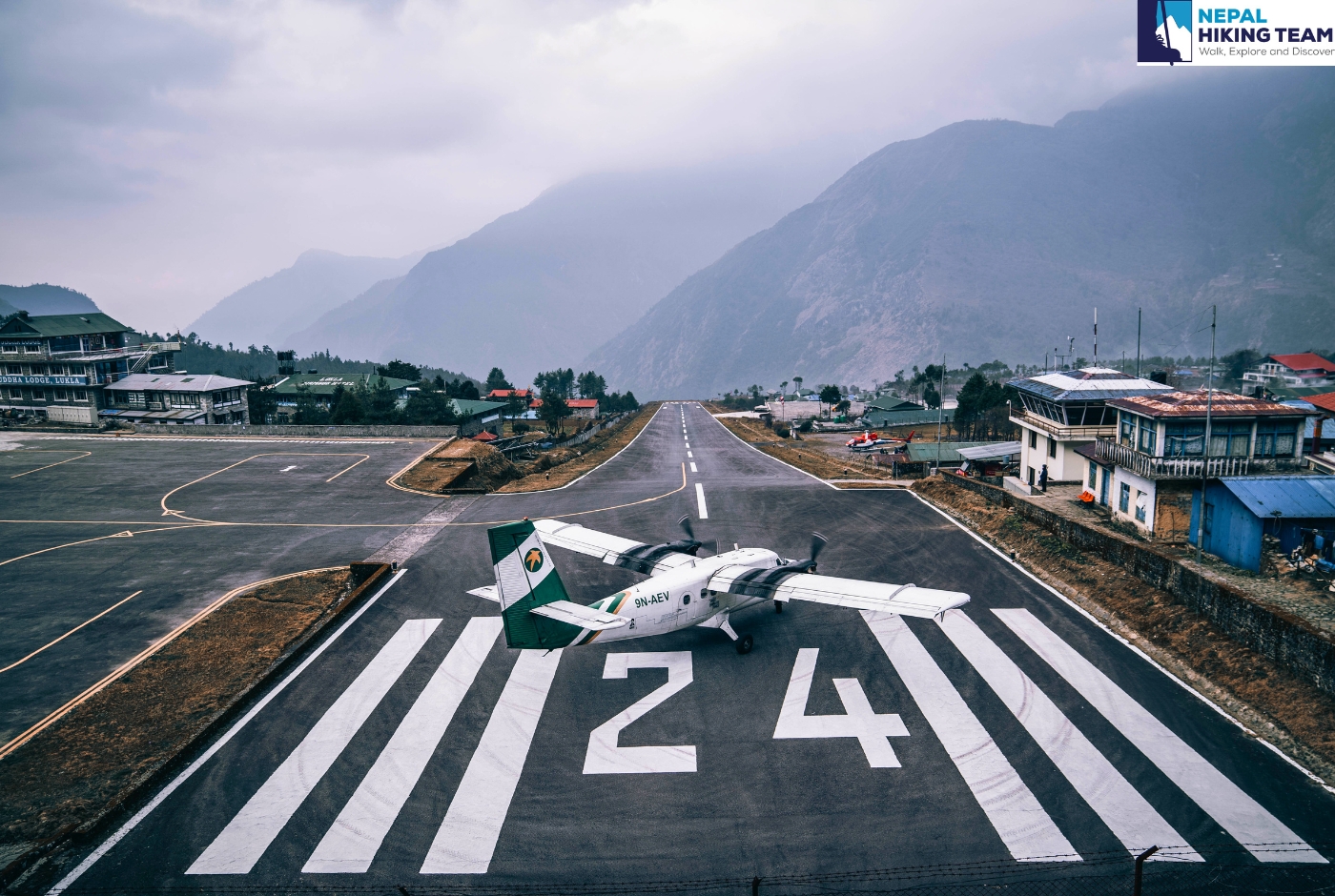
One easy way to reach the Himalayas National Park is to take a flight from Kathmandu, Nepal. Choosing a domestic flight is the most common and efficient way to get to the gateway to Sagarmatha. The flight only takes about 25 - 35 minutes, but the stunning views of the surroundings from the window are breathtaking. Lukla (Tenzing Hillary Airport) is not only the entry gate to Sagarmatha but also the Everest Region.
You can reach Lukla by Manthali Airport in Ramechhap, which is also 132 km away from Kathmandu. It takes around a 3-4 hour drive to get there. This travel is much preferred during peak season from March to May and again from September to November.
Sagaramatha National Park by Helicopter
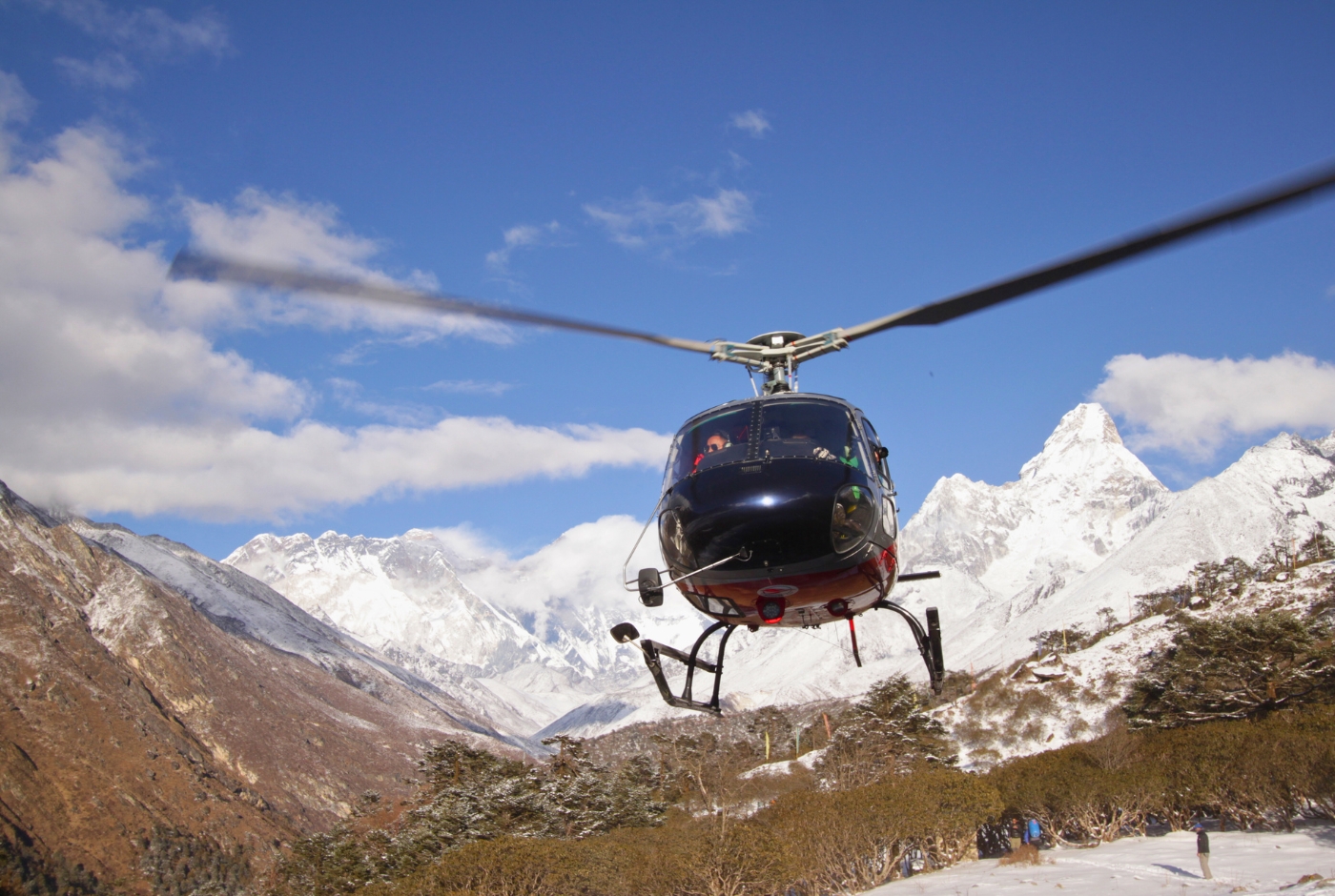
Alternative option: If you want to avoid driving/flying, you can take a helicopter ride to Lukla. The helicopter can carry five passengers, one at a time. Depending on the weather, you will reach the Lukla Airport in 40-60 minutes.
After the Lukla, your major stop will be Phakding, passing by the numerous villages. You will have to spend a night in Phakding.
The next day, you will continue your journey to Namche Bazaar. It is the main trading center and hub for trekkers in the Khumbu Region. Namche is also a good place to rest (acclimatize) and explore local culture.
After spending two nights and a day in Namche, you will start your hike, where you will reach Monjo. Near Monjo is the entry gate for Sagarmtha National Park. You will need to purchase an entry permit at the entrance to enter. Make sure that you have the necessary paperwork (permit and travel insurance).
After entering the park, you will pass by various destinations like Tengboche, Dingboche, Lobuche, Gorak Shep, and, ultimately, Everest Base Camp.
Sagarmatha National Park by Drive
If you want to travel to the Everest Region not by flight but on foot, then there is an alternative option. You can start your adventure from Kathmandu to Phalpu village and then to Paiyun village by driving and then trekking to Phakding. (Other routes are the same)
Major Facts of Sagarmatha National Park
| Feature | Details |
| National Park Declared | July 19, 1976 |
| National Park Area | 1,148 km² |
| Location | North-eastern Nepal (Solukhumbu District) |
| World Heritage Site Listed | 1979 (Natural Site) – Site No. 120 |
| Bioclimatic zone | Temperate-alpine-nival zone |
| Elevation Range | 2300m - 8848.86m above mean sea level |
| Major Geophysical Characteristics | Mt. Everest Region, Glaciers, Valley |
| Major Glaciers | Khumbu, Imja, Ngozumpa, Nangpa |
| Major Peaks seen through Sagarmatha Zone | Sagarmatha (8,848.86m), Lhotse (8,516m), Cho Oyu (8,188m), Nuptse (7,861m) |
| Main Mammals | Snow Leopard, Musk Deer, Red Panda, Himalayan Tahr, Himalayan Black Bear |
| Main Birds | Himalayan Monal, Blood Pheasant, Snowcock, Bearded Vulture |
| Major Suspension Bridges | Hillary, Larja Dobhan, Phakding Suspension Bridge |
| Major Tree Species | Pine, Hemlock, Fir, Juniper, Birch |
| Buffer Zone Declared | January 01, 2002 |
| Buffer Zone Area | 275 km² |
| Rural Municipality | Khumbu Pasang Lhamu (Ward no: 2, 3, 4, & 5) |
| Population | 7161 |
| Major Caste Groups | Sherpa, Tamang, Rai |
| Economy | Tourism, Agriculture, Animal Husbandry, Business, Mountaineering |
| Entrance - Fee | Nepali - NPR 25 per person per entry, SAARC Country - NPR 1500 per person per entry, Foreigner Country- NPR 3000 per person per entry |
Top Highlights of Sagarmatha National Park
Sagarmatha National Park is home to Mount Everest, the world's highest mountain, which has attracted trekkers and travelers not only from Nepal but from around the world.
Several trekking manners, including one of the iconic trekking routes, EBC, also known as Everest Base Camp lie in this region. This trek offers stunning and breathtaking views of mountains, and people can also have a challenging adventure—another famous trekking area of Sagarmatha National Park.
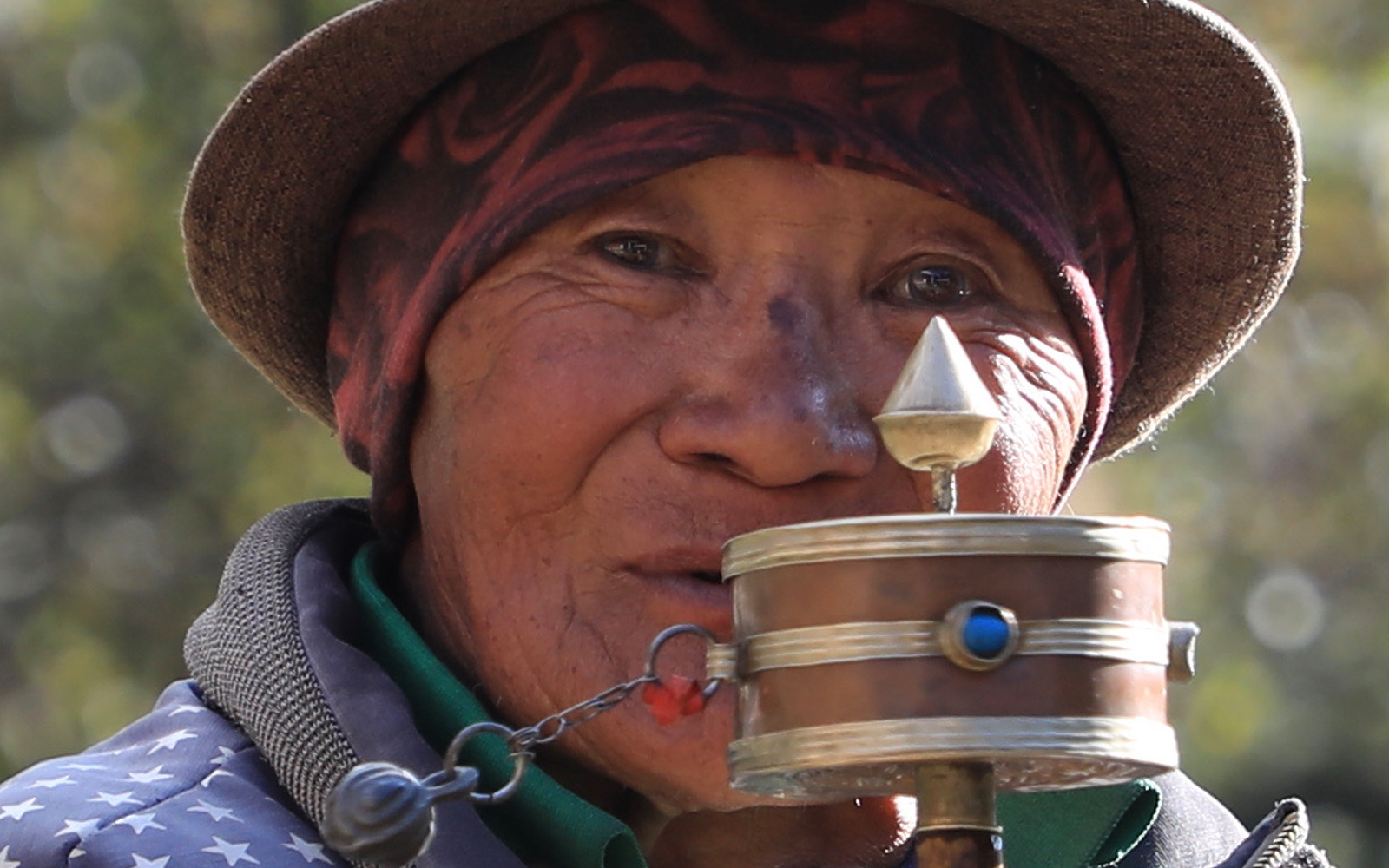
The National Park covers dramatic landscapes with towering peaks, deep gorges, glaciers like Khumbhu (the highest glacier in the world), and alpine meadows.
The Sherpas of the Khumbu region are renowned for their mountaineering expertise in guiding climbers on Everest expeditions. Originating from Tibet, they practice Tibetan Buddhism and rely on tourism for income. Their villages, like Namche Bazaar, are cultural hubs. Sherpas prioritize conservation, reflecting their deep respect for nature.
Haven to various plants and animal species, including rare and endangered species like the snow leopard, red panda, and Himalayan Tahr. Over more than 118 species of birds are found in the Everest Region, making it a great destination for bird watchers.
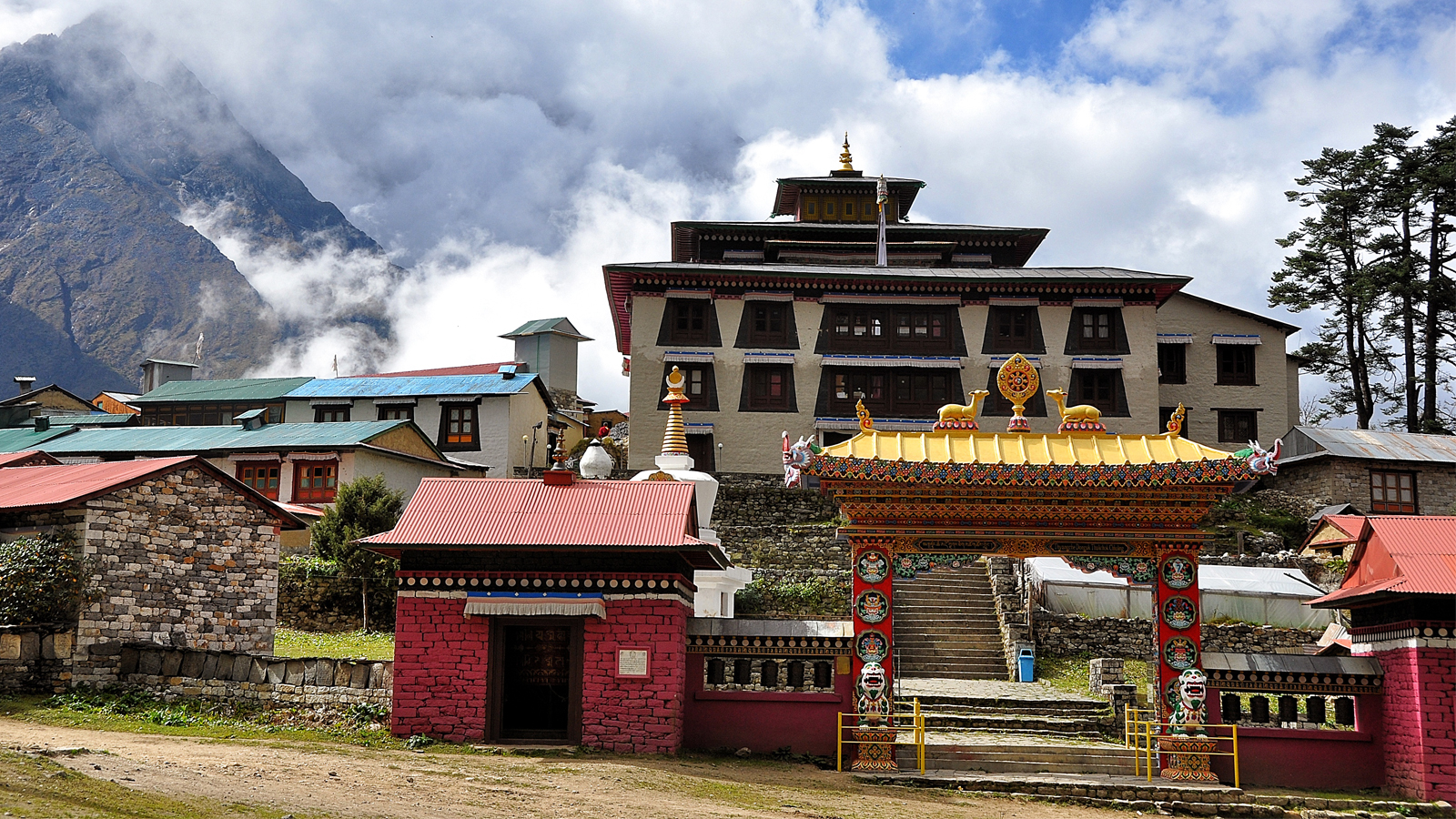
People can visit the ancient Tengboche Monastery (leading Buddhist center), which is the largest Gompa in the Khumbu area of Nepal. It is situated at a height of 3687m on the Everest Base Camp route. This Monastery was built in the 20th century. This monastery offers a peaceful retreat for meditation and spiritual reflection.
Not only is Sagarmatha famous for its Cultural experience, biodiversity, trekking, and adventure activities, but it is also a great opportunity for those who are interested in photography.
Why Mount Everest is called Sagarmatha?
Mount Everest is called Sagarmatha in Nepali, a name that holds significant meaning and cultural importance. Here are some reasons behind the name of Sagarmatha as Everest.
Etymology and Meaning
- Sagarmatha: The name "Sagarmatha" is derived from the Nepali words "Sagar," meaning "sky," and "Matha," meaning "head." Thus, Sagarmatha translates to "Forehead in the Sky" or "Head of the Sky," reflecting the mountain's towering height and its status as the highest point on Earth.
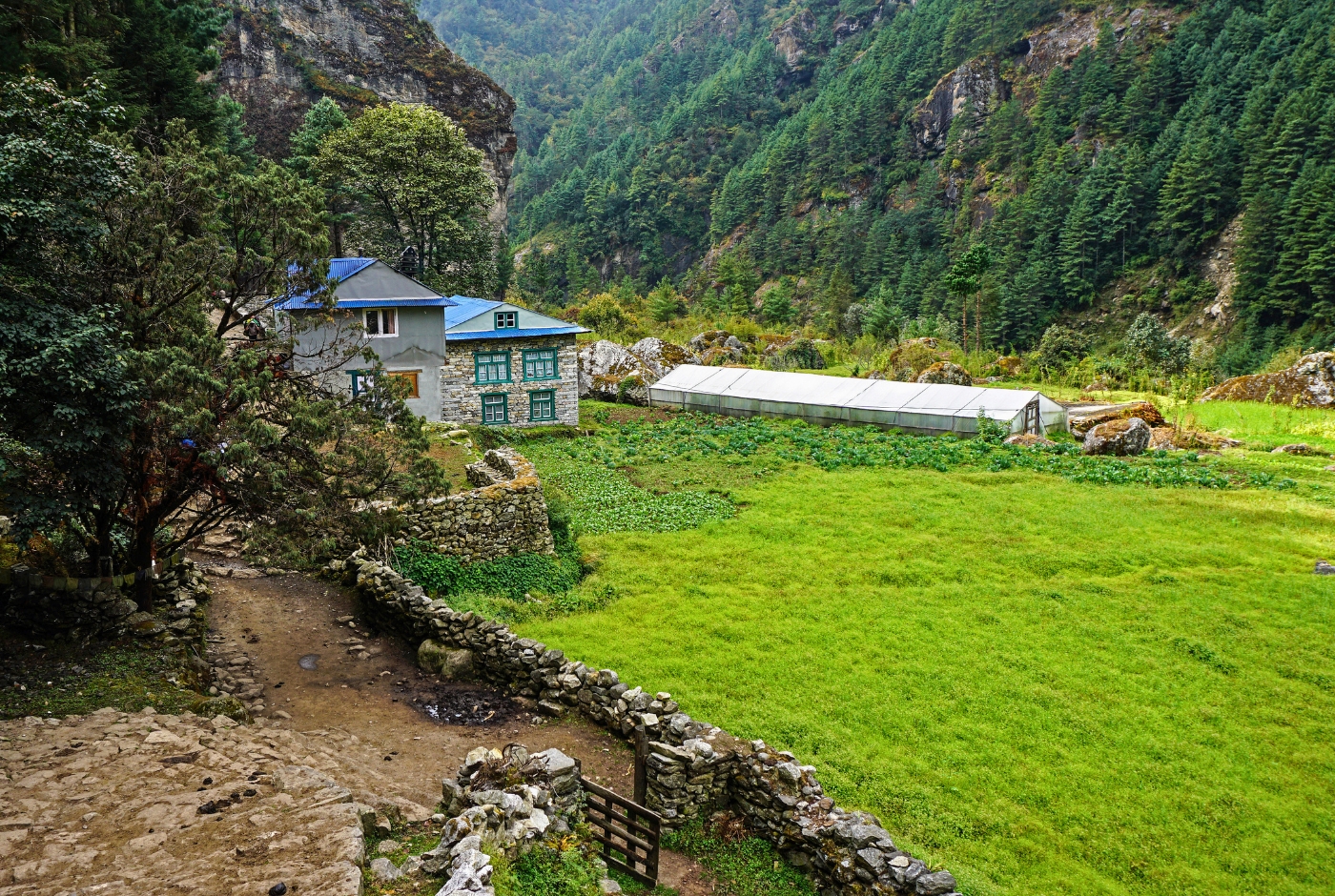
Cultural Significance
- Local Reverence: The name Sagarmatha is deeply rooted in the cultural and spiritual beliefs of the local people. For the Sherpa and other indigenous communities living in the Everest region, the mountain holds sacred significance and is considered a deity.
- Respect for Nature: The name also embodies the reverence and respect that the local population has for nature and the mountains, which are often viewed as spiritual entities.
Contrast with Western Naming
- Mount Everest: The English name "Mount Everest" was given in honor of Sir George Everest, a British surveyor general of India in the 19th century. This name was officially adopted by the Royal Geographical Society in 1865.
- Local Preference: Despite the global recognition of the name Mount Everest, the local name Sagarmatha remains widely used and preferred within Nepal, emphasizing the cultural identity and heritage of the region.
Other Local Names
- Chomolungma: In Tibetan, the mountain is known as "Chomolungma" or "Qomolangma," which means "Goddess Mother of the World" or "Holy Mother." This name is also deeply spiritual and reflects the cultural beliefs of the Tibetan people.
- Variety of Names: These different names highlight the diverse cultural perspectives and the deep connection various communities have with the mountain.
The name Sagarmatha encapsulates the awe-inspiring nature of Mount Everest and reflects the cultural and spiritual values of the people living in its shadow.
Height of Sagarmatha
Sagarmatha, also known as Mount Everest, stands at a height of 8,848.86 meters (29,031.7 feet). This is the official height determined by a joint survey conducted by Nepal and China. The height was confirmed on December 8, 2020, after separate measurements by both nations.
Sagarmatha National Park during all seasons
Sagarmatha National Park in Autumn (Sept - Nov)

The peak season for trekking is during the autumn season from September to November in Sagarmatha National Park. The weather starts to turn pleasant, with blue skies providing excellent vistas of the Great Himalayas, including Mount Everest. It begins from the last of monsoon so that there is no rain and the best time for the trekking is considered. It can go up to 15 – 25 degrees Celsius in the day and -10 degrees Celsius at night as one progresses upwards. During this time of the year, mornings and nights are cool/ cold while days are warm, making the environmental conditions perfect for an enjoyable hike.
Sagarmatha National Park in Spring (March-May)

The climate is generally pleasant, and the routes are lined with beautiful rhododendron flowers, which are also Nepal's national flower. Kathmandu experiences temperatures between 15-20 degrees Celsius while the temperature at the higher terrains varies between -2 to 10 degrees Celsius. During this time of the year, it is quite easy to get clear views of the Mountains, especially the Himalayas; there are many more hours of daylight and the best seasons for Lukla flights and Helicopter trips, making it festive and scenic for trekking.
Sagarmatha National Park in Monsoon (June-August)
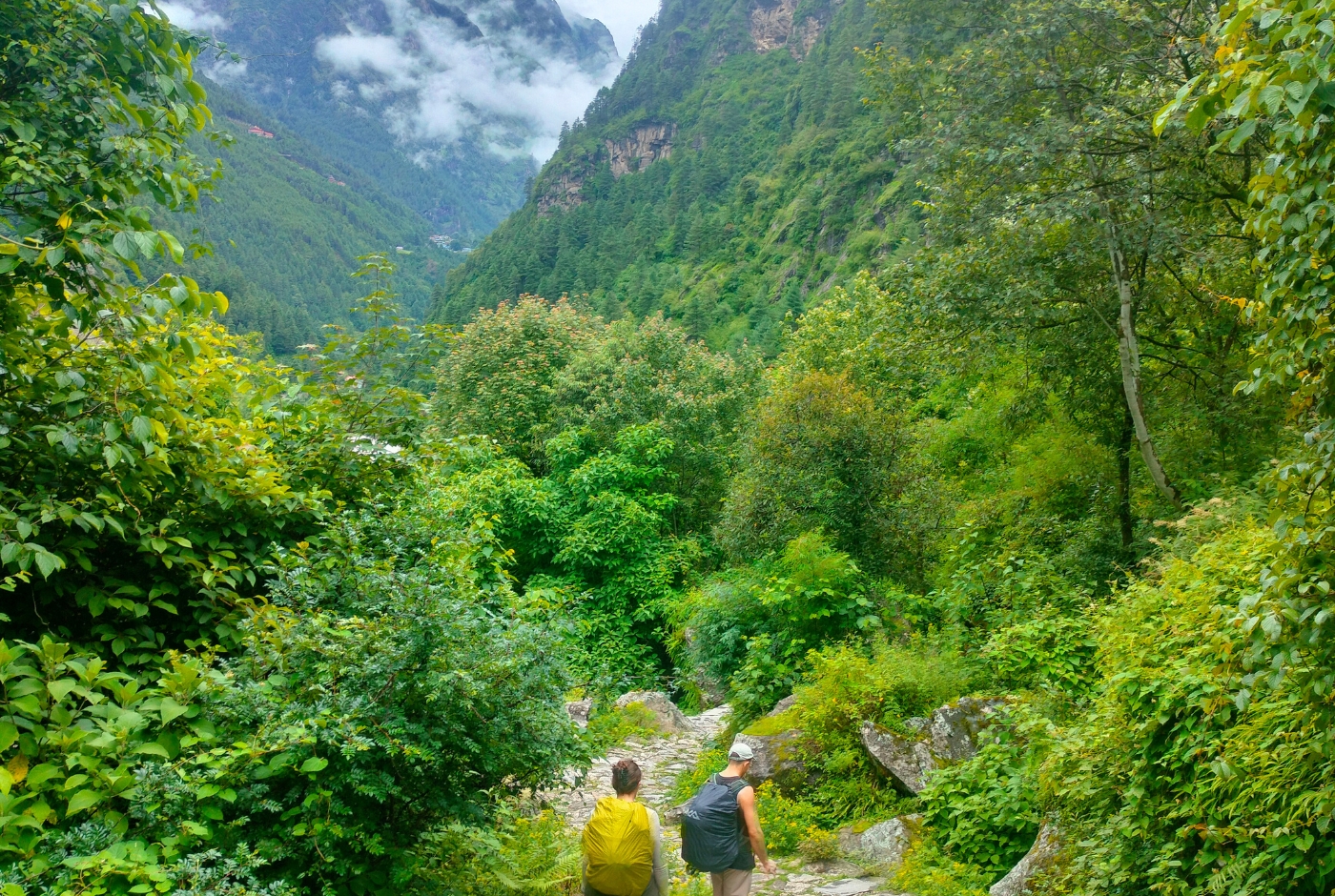
The monsoon season, from June to August, brings an average rainfall of 500-550 mm, making the trails muddy and slippery. Temperatures range from a maximum of 10 degrees Celsius to a minimum of -2 degrees Celsius. Despite the challenges, the rain enhances the greenery, offering lush landscapes and unique biodiversity. With fewer crowds and lower costs, trekkers can enjoy peace and solitude. However, it's essential to have good-quality boots and waterproof gear for the trek.
Sagarmatha National Park in Winter (December-February)

Winter in Sagarmatha National Park, from December to February, is harsh, with temperatures dropping to -10 to -15 degrees Celsius at night. The weather is unpredictable, shifting from sunny days to snowstorms. Despite the cold, the views of snow-capped peaks are stunning. The trails are less crowded, offering unobstructed views and a peaceful trek. December is an ideal month for fewer crowds, but it's crucial to be well-prepared with warm clothing and proper equipment. The shorter daylight hours and severe weather conditions make it a challenging yet rewarding experience for well-prepared trekkers.
Permits to enter Sagarmatha
To enter and explore the beauty of Sagarmatha National Park, travelers need to purchase the Sagarmatha National Park Permit. This permit can be acquired after a short hike from Phakding at the Sagarmatha National Park entry gate in Monjo.
The cost of this Sagarmatha Park varies based on nationality. For Nepalese people, the cost is only NRS 100; for SAARC nationality, it is NRS 1500, whereas for the rest of the foreign nationality it cost is NRS 3000. Keep in mind that you should pay this cost in Nepali Currency (NPR). To acquire this permit you need to have your support.
Flora and Fauna in Sagarmatha National Park Area
Flora of Sagarmatha National Park
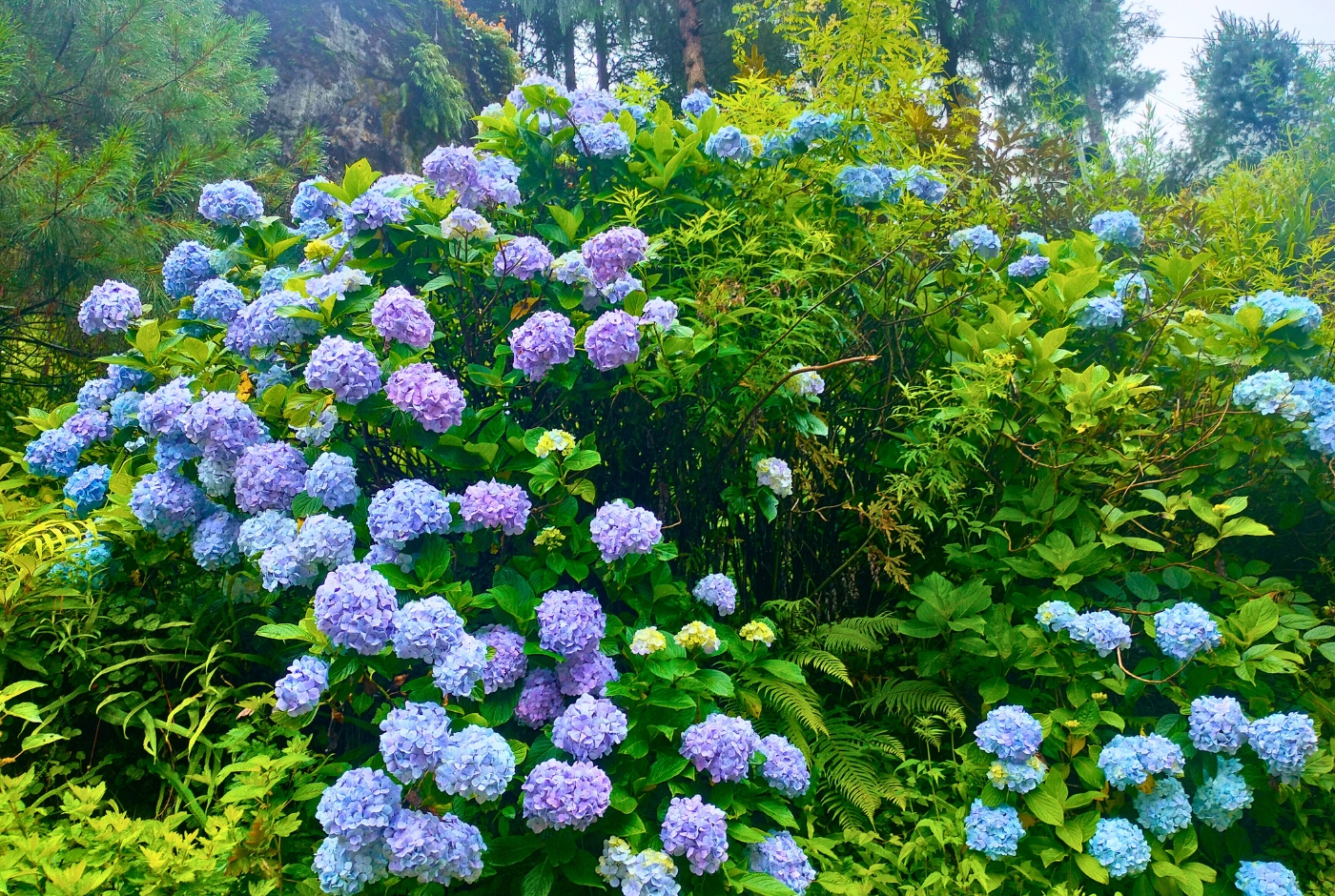
In the lower region, up to 3000m, you can experience the temperate forest filled with pine and hemlock trees. Rhododendrons (the National flower of Nepal) are clearly noticeable in the spring when they bloom with vibrant colors. Birch and Juniper trees are more common ones as you go higher up.
At the Mid-level range from 3000-4000m, you can notice the landscape change. Tall trees are replaced by short grassy shrubs. The area is covered by fir, birch, and rhododendrons, and as the altitude level increases, shrubs and small plants such as alpine, mosses, and lichens cover the surroundings.
In the high region above 4000 (above from the treeline), you can hardly see the trees. The vegetation you can see is mainly alpine meadows with hardy grasses, mosses, and lichens. The thin air, harsh climatic conditions, and rocky terrain result in sparse vegetation. However, some specialized plant species have adapted to this extreme environment of Sagarmatha.
Fauna in Sagarmatha National Park
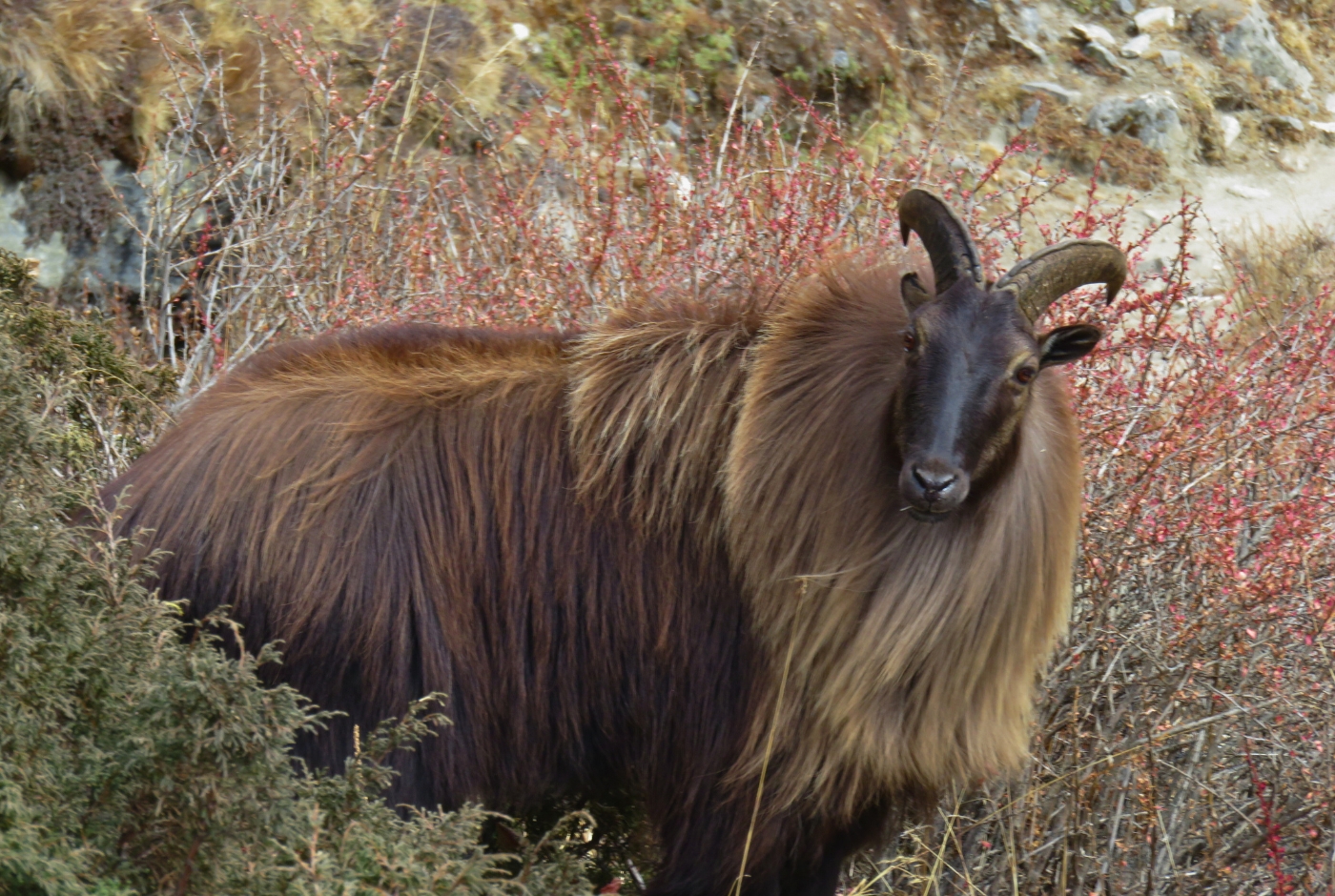
The fauna in Sagarmatha National Park is incredibly diverse, adapting to the varying altitudes and harsh conditions. In the lower regions, you can find the elusive and endangered Snow Leopard, a top predator in the park. The temperate forests are home to the Red Panda, another endangered species that thrives in the cooler, wooded areas. The Himalayan Tahr, a wild goat, is well-suited to the rugged mountainous terrain and is commonly spotted along steep slopes. Musk Deer, known for their valuable musk glands, inhabit the subalpine and alpine regions. The Himalayan Black Bear is found in the lower forested areas, while Langur Monkeys are often seen in the park's forests.
Birdlife is also abundant and includes the national bird of Nepal, the Impeyan Pheasant, known for its vibrant plumage. The Blood Pheasant and Himalayan Monal are other striking bird species in the park. High-altitude regions are home to the Snow Partridge and the large Himalayan Griffon vulture, frequently seen soaring above.
Reptiles and amphibians are less common due to the cold climate, but some hardy species can be found at lower altitudes. Conservation efforts are crucial in protecting this biodiversity, including anti-poaching measures, habitat preservation, and sustainable tourism practices. The park's UNESCO World Heritage status helps garner international support for these efforts.
The fauna of Sagarmatha National Park not only adds to its ecological richness but also holds cultural and spiritual significance for the local Sherpa communities, illustrating the intricate connection between nature and culture in this unique region.
Top Trekking Areas of Sagarmatha Region
Everest Base Camp Trek: Conquer the World's Highest Peak

Duration: 12-16 Days
Difficulty: Challenging
Maximum Altitude: 5,364 meters (EBC)/ 5545m (Kalapatthar)
Accommodations: Teahouses/Guesthouses
Best Seasons: March-May & Sept-Dec
The Everest trek is among the most popular treks in the Sagarmatha Area. Not only there, but the trek is known all over the world. The iconic base camp trek is a journey that starts from Lukla and takes you to the heart of the Khumbu region. The adventure is filled with the amazing beauty of the Himalayas. The exceptional views of snow-covered peaks, lakes, and glaciers from its routes make it Nepal's best adventure trail.
Highlights of the EBC Trek
- Scenic Flight to Lukla (2,860 m): Experience an exhilarating flight from Kathmandu to Lukla, one of the most thrilling airstrips in the world.
- Namche Bazaar (3,440 m): Explore the bustling Sherpa town, the gateway to Everest, and acclimatize while enjoying stunning mountain views.
- Tengboche Monastery (3,867 m): Visit the famous monastery with panoramic views of Everest, Nuptse, Lhotse, Ama Dablam, and Thamserku.
- Everest Base Camp (5,364 m): Stand at the foot of the world's highest mountain, a dream destination for trekkers and climbers.
- Kala Patthar (5,545 m): Hike to this renowned viewpoint for an unobstructed view of Everest and the surrounding peaks, especially during sunrise and sunset.
Key Points to Remember
- The trek involves significant altitude gain, making acclimatization days crucial. Be aware of the symptoms of (AWS) altitude sickness and take necessary precautions.
- Temperatures can drop significantly, especially at higher altitudes. Proper clothing and gear are needed to stay warm and safe.
- Unlike other trekking routes, the EBC route passes through remote areas with limited access to medical facilities. Carry a comprehensive first-aid kit and ensure you have all the paperwork, like travel insurance that covers high-altitude trekking.
- The Everest Base Camp trek is one of the best treks in the world, resulting in crowded paths during peak seasons. Early planning and booking are recommended to secure accommodations and flights.
Gokyo Lake Trek: A Journey to Turquoise Waters
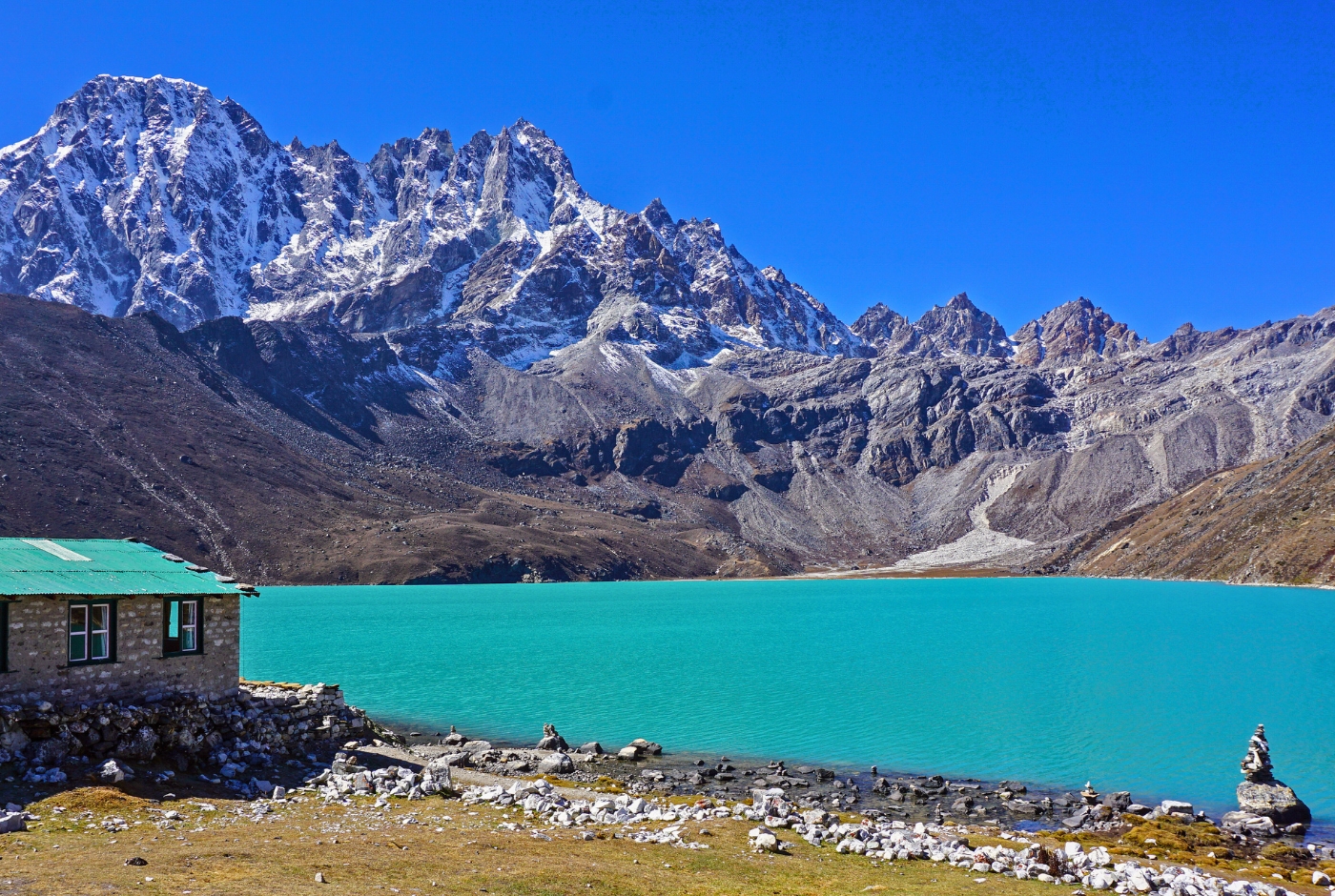
Duration: 12-15 Days
Difficulty: Moderate
Maximum height: 5,360 meters
Accommodation: Teahouses/ Guest House
Best time: March-May/Sept-Dec
Explore the serene Gokyo Valley and its stunning turquoise lakes. This trek in the Khumbu Area of Nepal leads to Gokyo Ri (5,357 meters), offering panoramic views of Mount Everest and other Himalayan peaks. The trail features the sacred Gokyo Lakes, the vast Ngozumpa Glacier, and vibrant Sherpa villages, providing a tranquil and rewarding trekking experience.
Highlights:
- Hike to Gokyo Ri for spectacular Everest region views
- Discover the beautiful Gokyo Lakes
- Traverse the Ngozumpa Glacier
- Visit Namche Bazaar, the Khumbu trade hub
- Stay in cozy teahouses
- Enjoy local Nepalese and Sherpa cuisine
Everest High Pass Trek: An Adventurous Circuit through the Himalayas
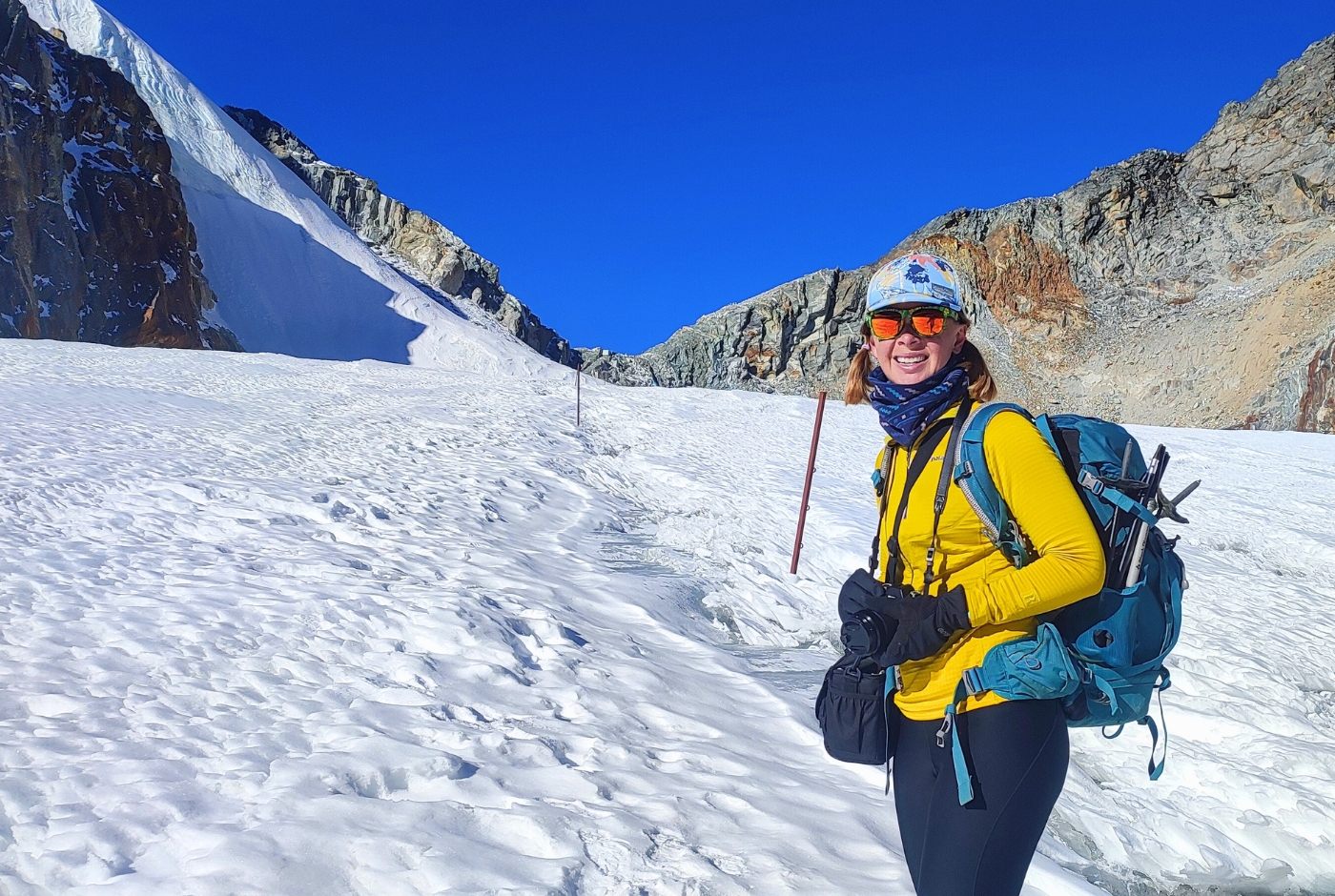
Duration: 18-21 Days
Difficulty of the Trek: Strenuous
Max. height: 5,545 meters
Accommodation: Teahouses/ Guest house
Best time: March-May/Sept-Dec.
The Everest High Pass Trek is an adventurous circuit in Sagarmatha National Park designed for trekkers seeking an extra challenge. This trek crosses three high mountain passes: Kongma La (5,535 meters), Cho La (5,420 meters), and Renjo La (5,340 meters), providing unparalleled views of the Everest region's majestic peaks and valleys.
This strenuous trek takes you to Everest Base Camp and introduces you to the serene Gokyo Lakes and bustling Sherpa villages, offering a comprehensive Himalayan experience.
Top Highlights of Everest High Pass:
- Cross over three high passes in the Region. i.e Kongma La, Cho La, and Renjo La
- Go on a Hike to EBC and Kala Patthar (5,545 m) for an iconic view of majestic MT. Everest.
- Experience the Stunning Gokyo Lakes and Ngozumpa Glacier.
- Visit bustling towns like Namche Bazaar, Monastery of Tengboche, and other cultural sites.
- Enjoy Nepalese and Sherpa local cuisine while staying in cozy teahouses along the trip.
Important Notes:
- There may be a flight delay or cancellation to Lukla due to the change in weather conditions.
- Slightly more risk of Acute Mountain Sickness (AMS) than in other adventures; you need proper acclimatization and precautions.
Conclusion
Sagarmatha National Park is a remarkable blend of natural splendor and cultural depth. It's a place where every trekker and nature enthusiast can find something truly special. Whether you're navigating its rugged trails, soaking in the diverse plant and animal life, or engaging with the vibrant Sherpa communities, this park offers experiences that are both thrilling and profoundly moving. From the majestic peaks of Everest to the spiritual ambiance of local monasteries, Sagarmatha invites you to connect deeply with both nature and culture, promising memories that will stay with you long after you've left.
Check out our popular treks in Sagarmatha National Park:
14-day Everest Base Camp Short Trek
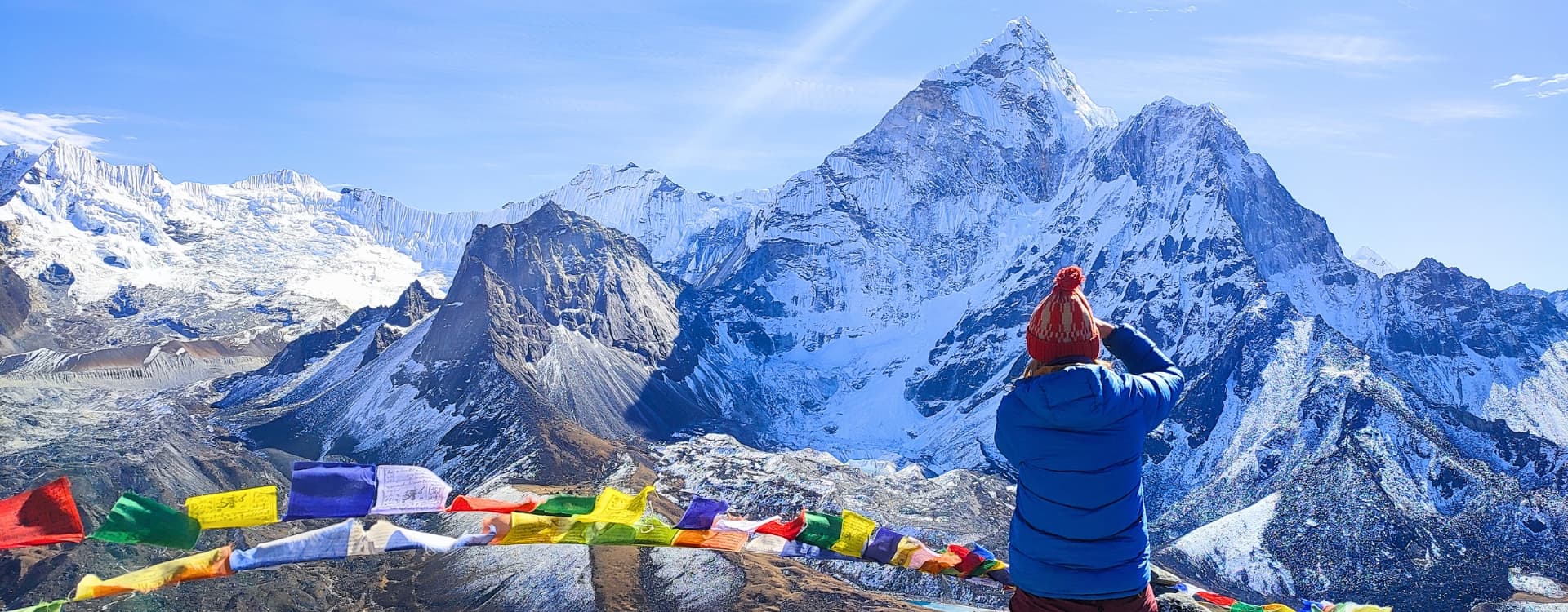
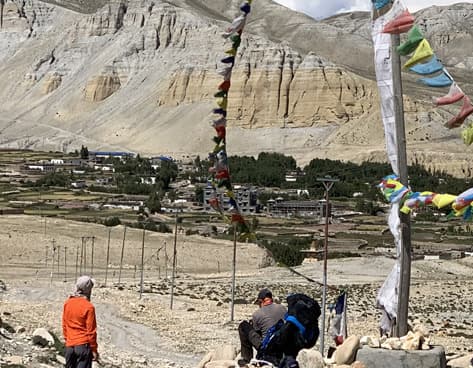
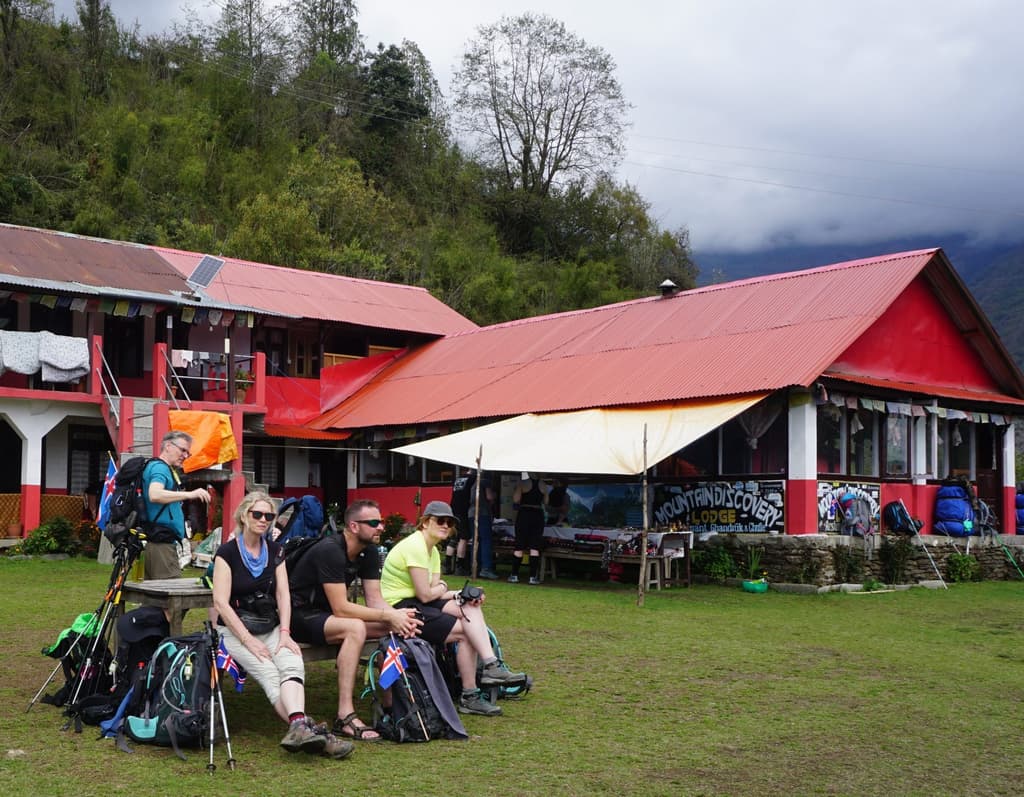
Post a Comment